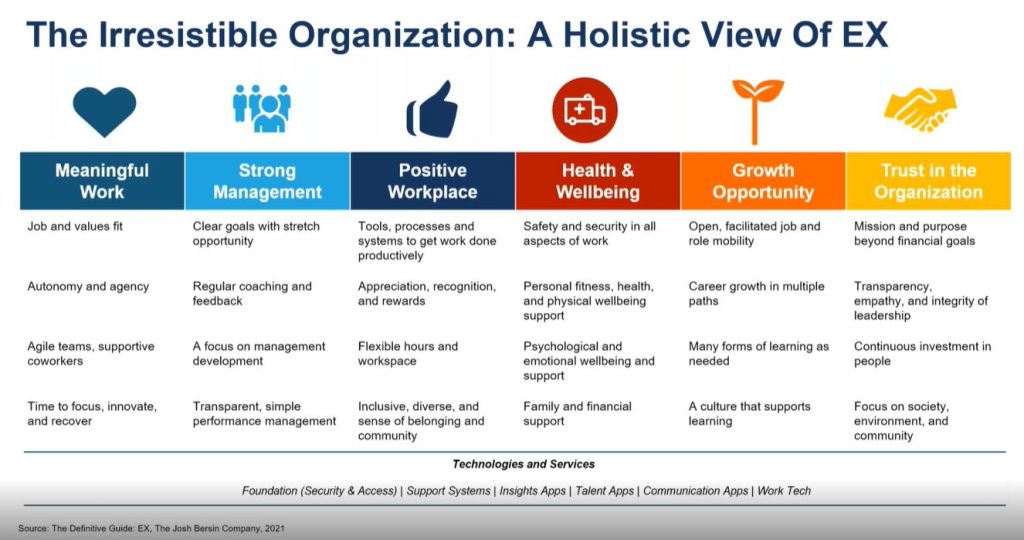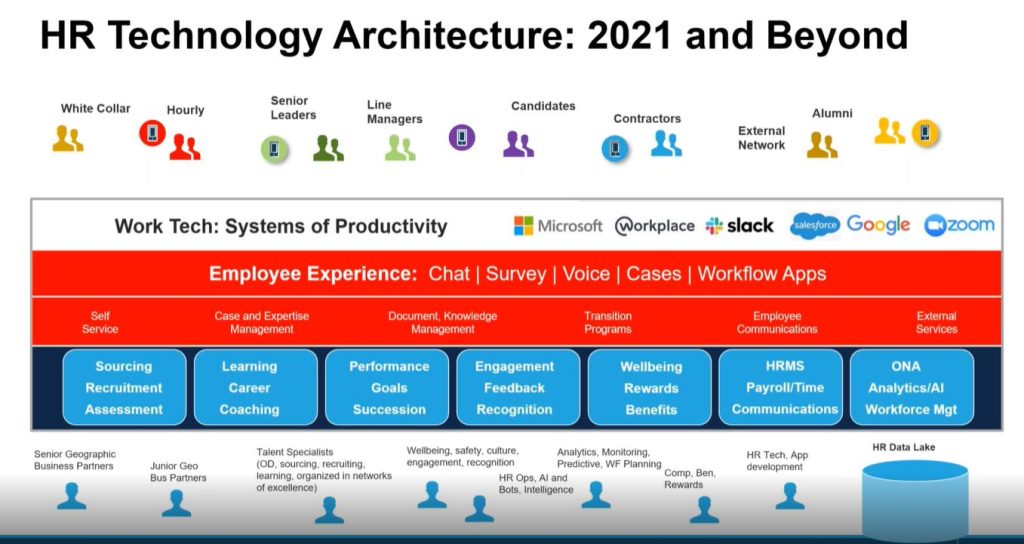Josh Bersin on how to upgrade your EX strategy and tools
Bersin is a renowned HR industry analyst.
Why You Should Care
Employee experience (EX) is crucial to winning in the 'Great Resignation', according to HR analyst Josh Bersin.
HR tech tool can help companies dial up their EX strategy.
What does the future of EX look like?
The COVID-19 pandemic has undoubtedly changed the world of work forever.
Josh Bersin, a HR analyst, is clear that if companies can manage the current shift to remote working, and implement a whole new set of benefits and programs around mental health and resilience, they can do it for the long term.

Josh Bersin, HR analyst and expert.
However, according to Bersin’s presentation at a recent webinar held by HR tech firm Applaud, success and future-proofed strategies rely on the continuing idea that “our job [in HR] is to constantly figure out what we can do to make employee lives more productive”.
Firms must do this by focusing on employee experience (EX), according to Bersin. Importantly, this is different from “employee relations”, which is an outdated way of thinking about overall EX.
This is particularly important since we are in the middle of a ‘Great Resignation’.
“The job market is going crazy,” Bersin states. Companies must retain staff by keeping them happy and productive at work but also work tirelessly to attract new talent.
There is a clear business case for prioritizing EX.
“If you can’t hire people in a growing economy, you can’t grow; and [if] you can’t grow, then your competitors are probably taking your market share from you,” notes Bersin.
Successful EX strategies and tools
According to a report by Bersin’s firm, EX is multi-faceted and “employees are telling us with lots of data that they want and need it”.
The report looked at six categories of EX, along with technology. These are: the job itself, management, the workplace, health, wellbeing and inclusivity, opportunity to grow in your career, and trust in leadership.

While tech tools are important to getting EX right, “trust, integrity, fairness, inclusion and belonging are even more important,” according to Bersin. He believes that if organizations can get those aspects right, people will forgive imperfect tech.
He is excited about the emerging market of EX tools that allow employers, and particularly HR and managers, to continue to fix design issues that affect employees.
He explains that EX tools now sit between the back-end core HR system and the productivity layer that contains the likes of Microsoft Teams, Zoom and Slack.
This means companies don’t have to wait for their core HR system to innovate and become easy to use; they can put another tool of their choice – like Applaud, Microsoft Viva or ServiceNow – on top.

Credit: Josh Bersin Company.
With the help of these EX products, HR teams can design whatever they need, without waiting for an IT expert.
Bersin recommends that HR does this in collaboration with other teams asking for tools and support, particularly those that will be frequent users. If this is successful, organizations will achieve their aims for employees as well as business outcomes, he suggests.
Although EX strategies, including designing and implementing tools, takes time, ultimately “it will free HR teams from the complexity of dealing with technical issues in HR tech and allow time to get to know what employees are really doing”.
This, in turn, will lead to a better understanding of what tools, training and connections people need to do their jobs even better.
Ultimately, EX tools allow HR professionals to carry out the bread and butter tasks of their role to the best of their ability, without distraction.
What does the future hold?
Bersin predicts that the future of EX will be a “holy war” where more and more HR tech platforms and vendors build an increasing number of development tools.
This is a really important direction for the market, he states.
Choice is key for employers to decide which vendor is offering the best solutions for their employees – rather than firms simply having to settle for what’s already available.
Sign up to the UNLEASH Newsletter
Get the Editor’s picks of the week delivered straight to your inbox!

Chief Reporter
Allie is an award-winning business journalist and can be reached at alexandra@unleash.ai.
